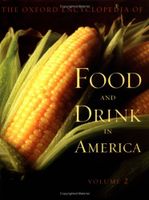Advertisement
St. Patrick’s Day
Appears in
Published 2004
American St. Patrick’s Day has been described as “Eiresatz: a sentimental slur of imagined memories, fine feeling and faux Irish talismans and traditions” (Dezell, 2000, p. 17). It is a festival of soda bread, corned beef and cabbage, cardboard shamrocks, green hats, bagels, and beer. In Ireland, St. Patrick’s Day is a religious holiday, but here it has become an Americanized spectacle.
The Irish immigrated to the United States in two distinct waves. In the early eighteenth century, a relatively small number of Scotch-Irish, mostly Presbyterians from Ulster, settled in the agricultural green hills and valleys of the Appalachian region. From 1845 to 1850, Ireland lost 2 million people—either to starvation or to emigration to the United States. Over the next fifty years, half a million Irish, mostly Roman Catholics, emigrated each decade.


